Windfarm - project Sustainable Polder
Stalemate Context:
Municipality : "The current preferred alternative is the "best plan" according to the Municipality, but it remains a "compromise": it will never succeed in satisfying everyone. It remains a balancing of interests. We will all have to contribute to the energy objective, and as we have now made the calculations we will need 9?"
Other Stakeholders : "The alternative does not fit in any way: not within the framework, not within the energy objective. It is wishful thinking, without realism. The current plan has only losers. According to other Stakeholders there will be actions. We are 6-0 behind, and we do not have the resources like the Municipality, developers or a collective of farmers. We will take action unless the Municipality really comes to talk to us now. We have nothing against windmills in principle. A good plan could fit. However, we do not want to be guinea pigs."
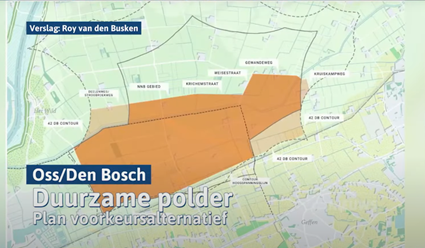
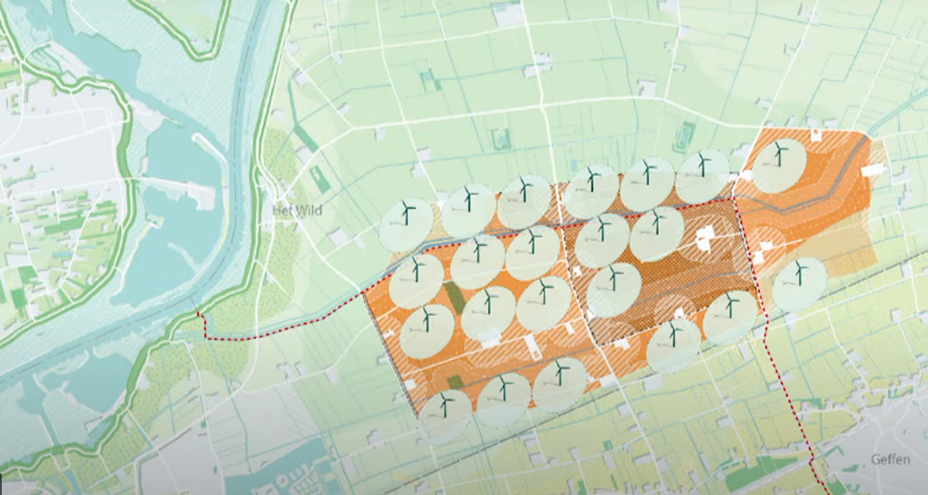
Technical context: This wind farm design project is to generate renewable energy for the city Oss (and DenBosch). To meet its energy goals, the Municipality wants to develop a wind farm with a number of turbines, which should ideally be as close to the center as possible to minimize energy losses. It is estimated that no more than 12 turbines are needed. Energy generation depends not only on the number and location of the turbines but also on the turbine height and the average wind speed required, among other factors. These four controllable (design) variables can still be varied. The current search c.q. preferred area is located on a (radius) line from the center of Oss to the west and extends to 10km inside the municipal border. The wind farm should be located at least 2km outside the center of Oss. The height of the turbines will not exceed 150m (hub height). Typical uncontrollable variables are : rotation diameter; type of power converter ; specific local environmental data etc.
The different design performance functions depend on the aforementioned design variables. Below are the relations for three performance functions between power genration; noise hindrance and bird mortality on the one hand and the four design variables on the other.
Social context: This wind farm design as part of sustainable polder development, demonstrates a multi-objective design optimisation (MODO) approach for the decision on the number of turbines at a certain location. The creative conflicts of ineterests are : (a) energy - profit for the service provider; (b) health- noise hindrance for the local residents; (c) environment - bird mortality for the ecologists; amogst others such as health & environment - particle pollution, magnetic cable radiation, horizon-pollution, and shadow cast. - particle pollution. From its contribution to the national energy transition, the Municipality has a minimum supply requirement of renewable energy ('RES-bijdrage'). The service provider wants to maximize the energy power generation within a positive business-case framework. The objectives of all other stakeholders should be minimized.
We will first describe the integrative design problem by running through the Odesys threefold mathematical statement framework, resulting in design performance-, objective-, and preference functions.
Objectives
Design Variables
Service provider (maximize profit)
x1: distance to city centre (2 km < x1 < 10 km)
Local residents (minimize noise hinderance)
x2: number turbines (0 < x2 < 12 #)
Ecologist (minimze bird mortality)
x3: turbine (hub) height (50 < x3 < 150 m)
RIVM health (minimize particle polution)
x4: average rated wind speed (3 < x4 < 15 m/s)
more Objectives:
Local residents (minimize magnetic radiation)
Design performance functions
Wind turbine generated power
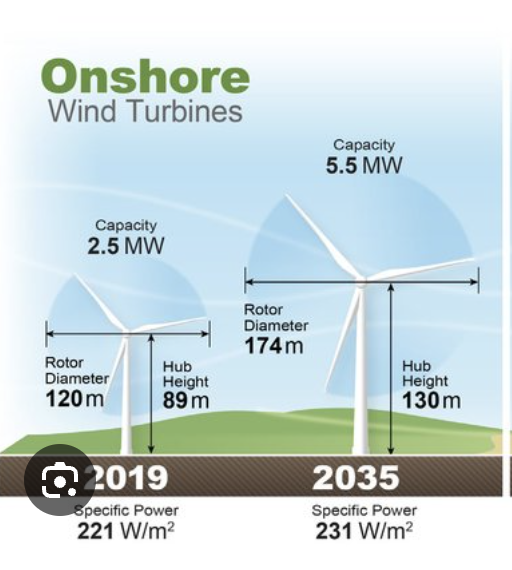
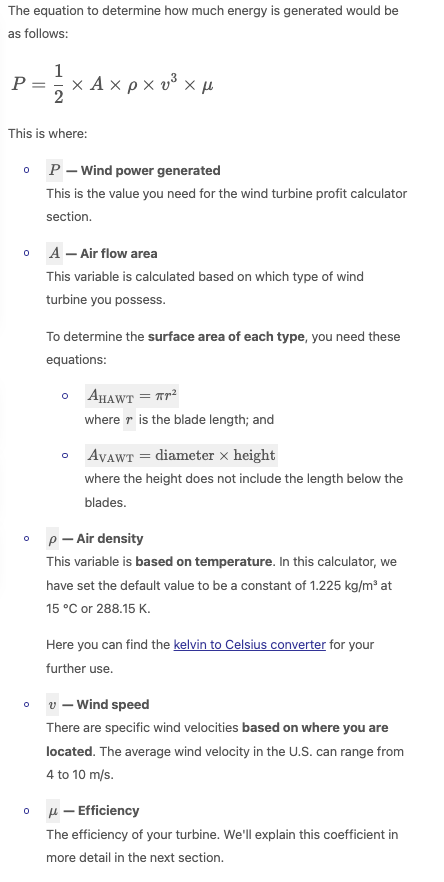

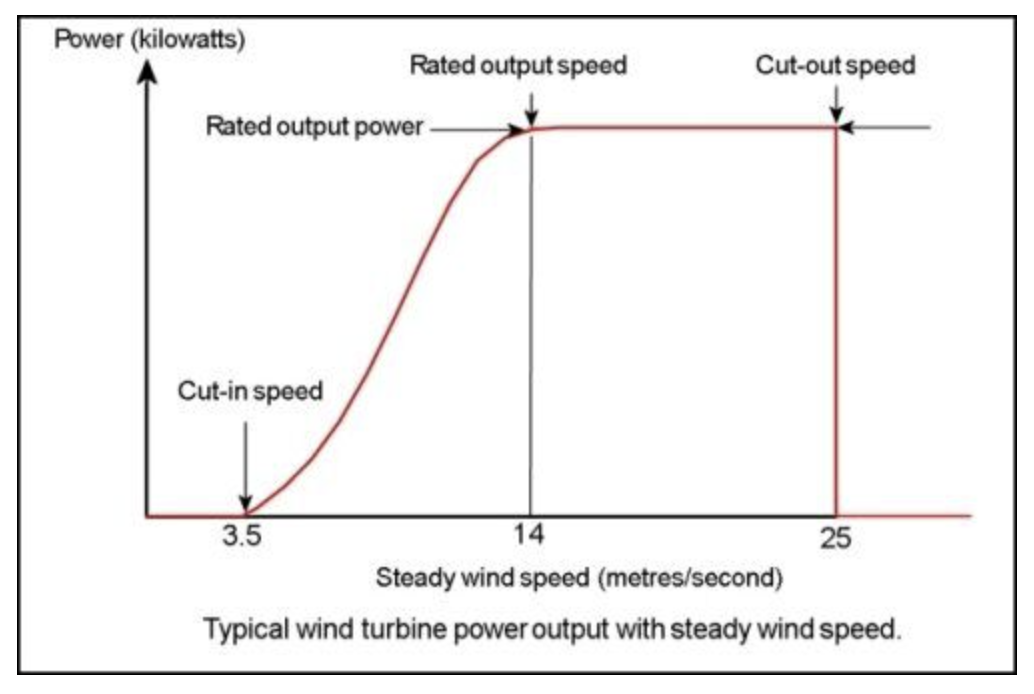
Noise hindrance
Bird mortality
Particle pollution
Constraint
Municipality (local energy target)
more Constraints:
Noise constraint (maximum 42 dB on facade)
Conjoint preference elicitation
At Boskalis a serious game for preference and weight elicitation was perfomed using choice-based conjoint analysis (CBCA). The rusults can be found in the confidential business report (Preference elicitation for Open Design Systems, A.A.M. (Anne Karien) van der Stee, 2024). This report can be retrieved on request. Below the essential results are presented.
For the preferences, a (CBCA) was used to elicit preference functions and weights estimations. It was chosen to use the CBCA, because it is known as one of the most realistic methods for determining preferences, it produces robust results in a short time frame and it offers a quantitative approach for obtaining both preference functions and weights. The final preference curves and weights were then generated by the participants/stakeholders, by evaluating and discussing the estimations. Within choice-based conjoint analysis, it is assumed that a product, or in this case a design, is a collection of objectives. These objectives are then used to create different design alternatives, each of which has various values assigned to each objective. An illustration of this is given in Figure 1. For CBCA, participants are then given a set of design alternatives to choose from. Participants are then asked to select their preferred design alternative within that set. This is repeated for several choice set. If non of the alternatives is preferred, there is also a “no choice-option”. In order to perform a choice-based conjoint analysis, first a choice-based conjoint experiment should be constructed. This consists out of four stages: (1) selection of objectives, (2) determination of assigned values for each objective, (3) choice of experimental design, and (4) data collection. When the experiment is conducted, the data can be analyzed, which is done with multinomial logit (MNL) models in combination with the log-likehood function.
Stage 1 is already covered in the social context of this problem. For stage 2, it should be considered that the amount of assigned values should kept low (most use three or four assigned values and at most five or six), that the assigned values should span the total range of possible values such that interpolation generates valid results, and it should be possible to make trade-offs between them. The final assigned values to the objectives can be seen below. Daily profit (euros): 0, 13500, 27000, 40500, 54000 Average noise disturbance (dB): 24, 36, 47, 61 Daily particle pollution (gram): 0, 13, 27, 41 Yearly bird mortality per turbine (birds): 0, 16, 34, 50
For stage 3 and 4, and for the data analysis, Sawtooth Software was used. In this software tool, you insert your specific question, the objectives and their assigned values in their template. Sawtooth Software then builds the design alternatives, the choice tasks, and does the data analysis. Here is the link to Sawtooth Software: https://sawtoothsoftware.com/. You can use a free account there. Below, you can see how the template works, where you have to write your question, and insert your objectives with assigned values.
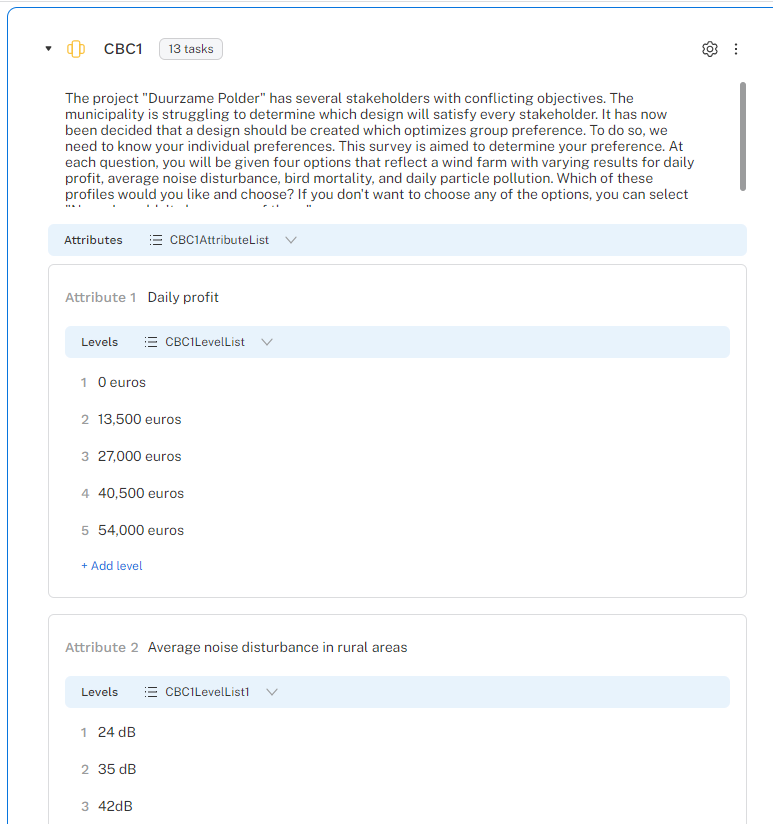
Below you can see a screenshot of one of the choice tasks of the questionnaire created by Sawtooth Software . The stakeholders are given 12 of these choice tasks. The question in each choice task is the same, but the given design alternatives are different in each.
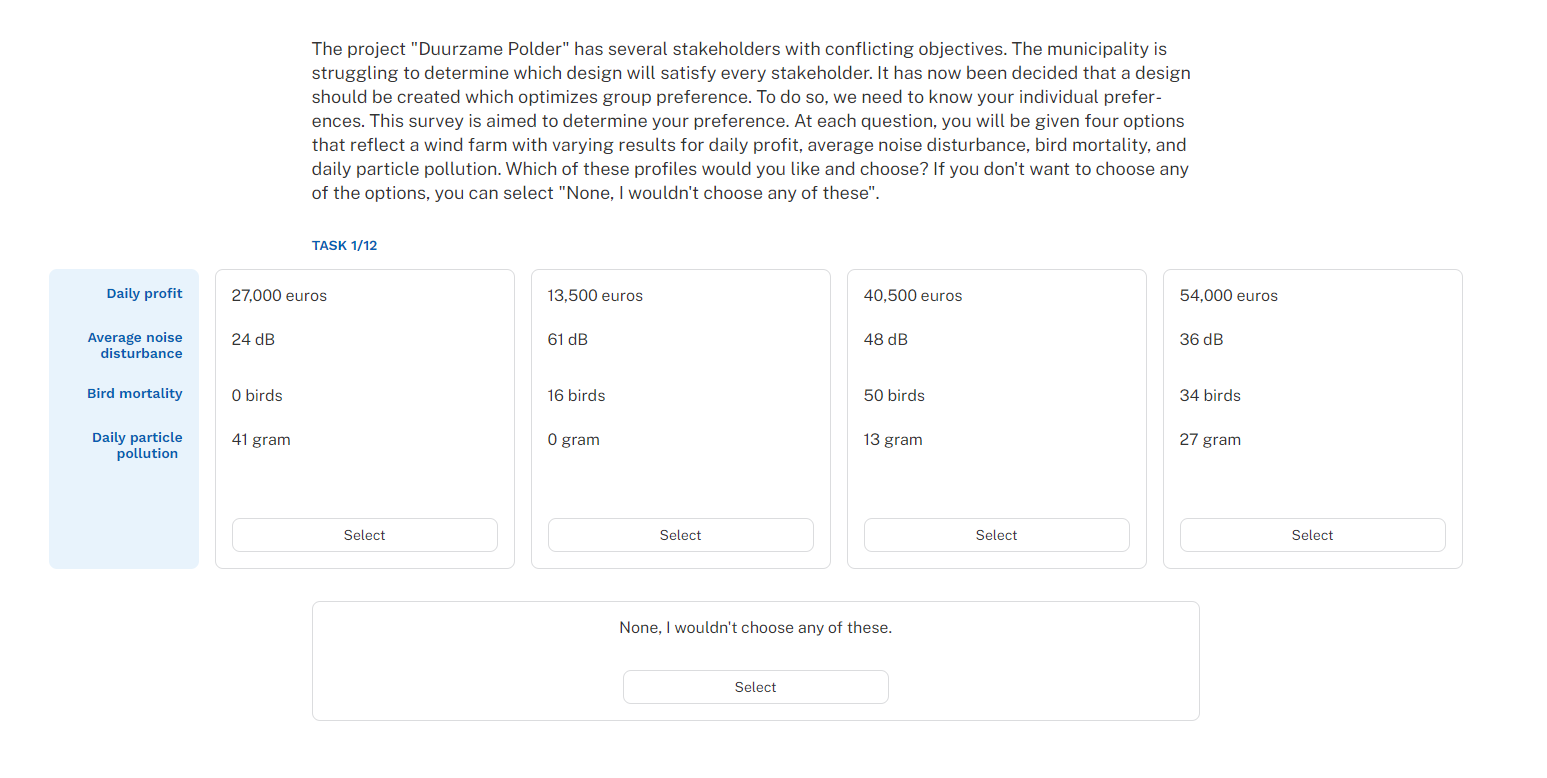
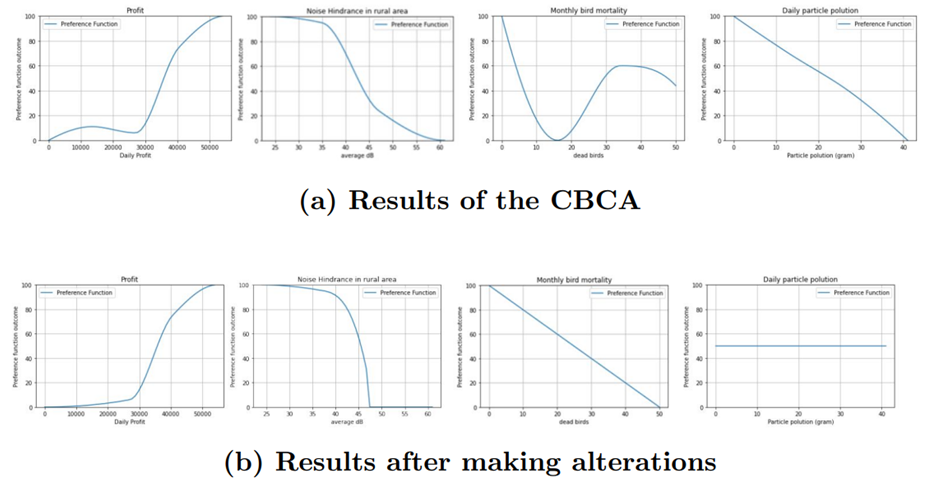
Below, you can see one example of the estimates of the choice-based conjoint analysis and the final preference functions. In the remainder of the report, the final preference functions of the stakeholders and their conjoint weights can be retrieved.